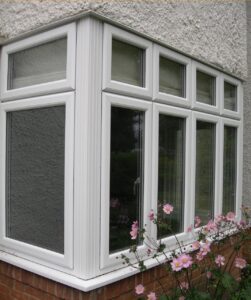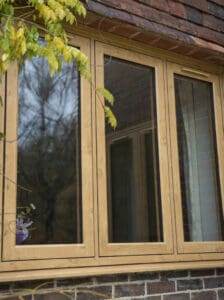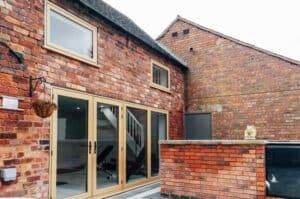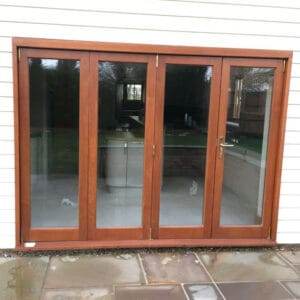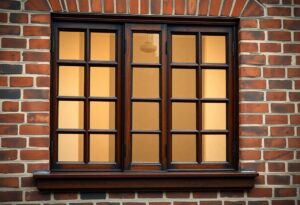Most homeowners seek to improve their living spaces, and high performance windows offer a sophisticated solution to enhance energy efficiency and comfort. By incorporating advanced materials and innovative design, these windows significantly reduce heat loss and noise pollution, making your home more sustainable and enjoyable. Understanding the technology behind these superior products can help you make informed decisions when considering upgrades for your property, ensuring you reap the benefits of long-term energy savings and increased property value.
Understanding High-Performance Windows
A high-performance window is engineered to enhance energy efficiency, comfort, and sustainability in your home. These windows incorporate advanced materials and technologies that significantly outperform standard window options. By effectively regulating temperature and light while minimising energy loss, high-performance windows represent a worthwhile investment for both environmental and economic reasons.
What Defines High-Performance Windows
For windows to be classified as high-performance, they must meet specific criteria including U-factor, solar heat gain coefficient (SHGC), visible transmittance, and air leakage rates. The U-factor measures heat transfer, while SHGC indicates how much solar heat is transmitted. Visible transmittance reflects the amount of natural light that enters, and air leakage rates quantify how efficiently the window prevents air loss. These metrics allow you to evaluate and compare various window technologies to make informed choices for your home (consider these factors when selecting windows for optimal performance).
Benefits of High-Performance Windows
Against traditional windows, high-performance options offer several advantages including energy savings, enhanced indoor comfort, noise reduction, and potential tax incentives. By lowering energy consumption for heating and cooling, high-performance windows not only reduce utility bills but also contribute to environmental sustainability. Enjoying a quieter living space and potentially benefitting from tax credits adds to the appeal of such windows (investing in high-performance windows can lead to significant savings over time).
Defines high-performance windows as efficient and advanced, highlighting their energy-saving potential and comfort enhancement. Improved insulation, better solar control, and reduced noise pollution are all positive aspects that come into play. Such benefits provide a significant return on investment while promoting a greener environment, making high-performance windows a wise decision for any homeowner (the long-term benefits can outweigh the initial investment cost).
Technologies Behind High-Performance Windows
Some of the latest technologies in high-performance windows involve a combination of advanced glazing techniques and robust frame designs, delivering exceptional energy efficiency and comfort. These innovations include low-emissivity (Low-E) coatings that reflect infrared light, triple glazing for enhanced insulation, and argon or krypton gas fills that reduce heat transfer. Together, these elements significantly improve thermal performance, reducing energy costs and enhancing overall comfort. (Choosing the right combination can greatly affect your energy savings and comfort levels.)
Glazing Technologies
Above all, various glazing options play a key role in elevating the performance of high-performance windows. Low-E coatings reduce heat loss while allowing light to enter, and triple glazing offers superior insulation over standard double glazing. Additionally, incorporating gas fills like argon between panes effectively minimises convection and conduction, further improving energy efficiency. (Selecting the appropriate glazing can make a notable difference in your home’s energy management.)
Frame Materials and Design
One factor that significantly impacts window performance is the choice of frame materials, which include vinyl, wood, aluminium, and fiberglass. Each material presents unique advantages regarding durability, insulation properties, and maintenance requirements. It’s also vital to consider design features like thermal breaks that prevent heat transfer through the frame, as well as ensuring structural integrity to withstand various weather conditions. (Investing in the right frame material can enhance durability and energy efficiency in your windows.)
In fact, when choosing frame materials and designs, you must weigh the long-term benefits each option presents. For instance, while vinyl offers excellent insulation and low maintenance, wood can offer unparalleled aesthetic appeal, though it may require more upkeep. It’s vital to assess the energy efficiency and durability characteristics of each material to align with your specific needs and preferences. (Understanding your priorities can guide you to the best decision for your window upgrades.)
Installation Best Practices
Clearly, the installation of high-performance windows is key to reaping their full benefits. You can learn more about this technology by checking out There is no need for a gaming computer to run High …. Ensuring a proper fit and seal during installation not only enhances energy efficiency but also reduces the risk of air leaks and moisture intrusion. Avoid common pitfalls, such as inadequate flashing or improper alignment, to maximise the longevity and performance of your windows.
Importance of Proper Installation
Below, it’s important to understand the role of proper installation in maximising the performance of high-performance windows. Ineffective fitting can lead to significant energy losses, contributing to higher utility bills and uncomfortable indoor temperatures. To avoid common mistakes, such as neglecting to check for level and plumb during the fitting process, ensure that you closely follow the manufacturer’s guidelines and consider hiring professionals when necessary.
Window Accessories and Their Impact
Proper selection of window accessories can dramatically enhance the overall performance of your high-performance windows. Accessories like shades, screens, and overhangs not only improve your home’s energy efficiency but also contribute to your comfort by controlling sunlight and reducing glare. Investing in the right accessories can significantly improve your living environment (be sure to choose accessories that complement your window’s design).
Impact on energy efficiency and comfort is amplified when you select compatible window accessories. Investing in high-quality shades and screens can significantly reduce heat gain in the summer, while well-designed overhangs can prevent excessive sunlight from penetrating your home. Choosing the right accessories can lead to lower energy costs and a more pleasant indoor climate (make your decisions based on both aesthetics and performance).
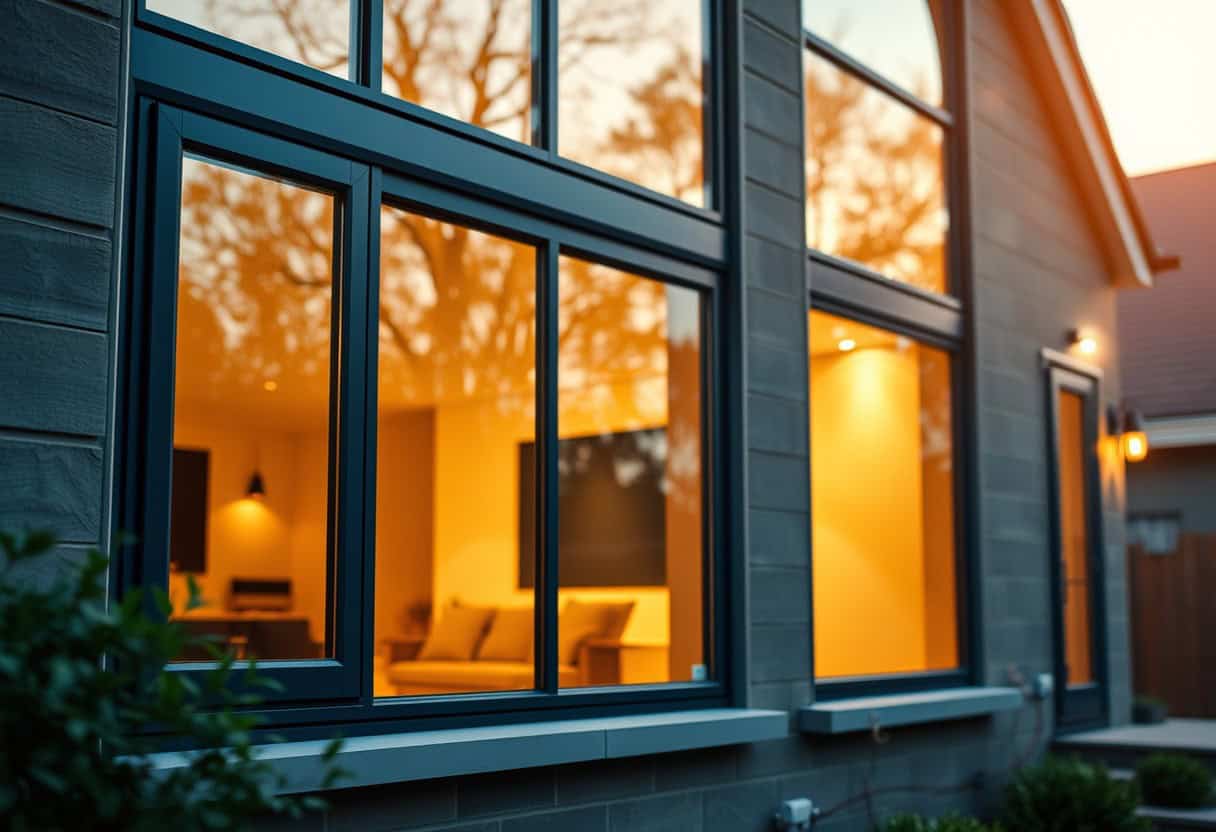
Comparisons with Standard Windows
All high-performance windows significantly outperform standard windows in multiple aspects, offering tangible benefits that align with modern sustainability goals. The table below summarises key differences:
| Aspect | High-Performance Windows |
|---|---|
| Energy Consumption | Up to 40% lower energy usage |
| Initial Costs | 20% higher upfront |
| Environmental Impact | Reduced carbon footprint |
On analysing energy efficiency, high-performance windows demonstrate superior heat retention and minimal air leakage compared to standard options. Case studies reveal a typical household could save about £300 annually on energy bills with high-performance installations. Furthermore, properties with these windows often achieve Energy Star certification. Such metrics highlight why investing in high-performance windows can be pivotal (especially for energy-conscious homeowners).
Long-term Value Assessment
Above the immediate savings, the long-term value of high-performance windows is substantial when evaluating the return on investment (ROI) and resale potential. Research shows an ROI of up to 80% at sale, significantly enhancing your property’s market appeal. Additionally, properties fitted with these windows often command higher resale values due to energy efficiency and aesthetic benefits.
Also, consider that investing in high-performance windows not only increases your home’s desirability but also greatly lowers your energy bills over time. Furthermore, with an increasing number of buyers prioritising energy efficiency, choosing high-performance solutions can place you ahead in a competitive market. This investment protects you from future cost surges related to energy, making it a smart financial decision for the long haul.
Future Trends in Window Technology
Once again, the window technology landscape is evolving rapidly, driven by the need for enhanced energy efficiency and sustainability. You can expect advancements such as smart windows that intelligently regulate light and heat, improved coatings for better insulation, and innovative designs that prioritise environmental impact. These trends are not only enhancing the functionality of high-performance windows but are also setting new benchmarks in the market, ensuring you stay ahead in the pursuit of superior performance.
Innovations in Materials and Designs
To understand the future of window technology, consider the rise of innovative materials and designs. New composites and advanced glazing techniques are emerging, making windows lighter, stronger, and more energy-efficient. Smart windows equipped with electrochromic coatings can change their tint automatically, helping you optimise natural light and reduce energy costs. These innovations are transforming traditional windows into multifunctional components of your home, reflecting a growing emphasis on sustainability and performance.
Regulatory Changes and Standards
About the evolving landscape of window technology, regulatory changes will significantly impact high-performance windows. You may need to comply with stricter building codes and energy efficiency mandates aimed at reducing carbon footprints. These regulations can drive up the demand for advanced window solutions, prompting manufacturers to focus on innovation and compliance to remain competitive within the market.
Another vital aspect of compliance is the push for sustainability in building practices, leading to potential penalties for non-compliance. You should be aware that new standards could include thresholds for thermal performance and energy consumption for your window choices. As a result, manufacturers may need to invest in research and development, resulting in a shift towards more environmentally friendly materials and technologies. These changes may enhance your building’s energy efficiency, contributing positively to both your costs and the environment.
Final Words
Upon reflecting, you can appreciate that high-performance windows represent a significant advancement in building technology that greatly enhances energy efficiency in your home. These windows incorporate specialised materials and design features, which not only contribute to thermal comfort but also reduce your energy bills. By investing in these windows, you’re investing in a more sustainable future and an improved living environment. For further insights, explore Understanding The Energy Rating System For High Performance Windows, which can help you make informed decisions about your window investments.
FAQ
Q: What are high performance windows?
A: High performance windows are designed to provide exceptional thermal insulation, noise reduction, and energy efficiency. They utilise advanced glazing technology, superior frame materials, and enhanced sealing techniques to reduce heat loss in winter and minimise heat gain in summer, contributing to overall indoor comfort.
Q: How does the glazing affect the performance of windows?
A: The glazing plays a pivotal role in determining the performance of windows. Double or triple-glazed units are commonly used, which consist of two or three layers of glass separated by an insulating gas, such as argon. This design reduces heat transfer and improves noise insulation. Low-emissivity (low-E) coatings can also be applied to the glass to reflect heat back into the room, enhancing energy efficiency.
Q: What materials are best for high performance window frames?
A: Common materials for high performance window frames include vinyl, wood, fibreglass, and aluminium. Vinyl offers excellent thermal insulation and low maintenance, while wood provides natural aesthetic appeal and good insulation properties. Fibreglass is highly durable and energy-efficient, whereas aluminium frames can be thermally broken to improve their insulation properties.
Q: How do high performance windows contribute to energy savings?
A: High performance windows significantly reduce energy consumption by lowering heating and cooling costs. By minimising heat exchange with the outdoors, these windows help maintain a consistent indoor temperature, which can lead to a reduction in reliance on HVAC systems. This energy efficiency is reflected in lower utility bills over time.
Q: Are high performance windows worth the investment?
A: Investing in high performance windows can provide substantial long-term savings through reduced energy costs and increased comfort. Additionally, they often come with enhanced durability and lower maintenance needs compared to standard windows. Furthermore, well-designed windows can improve property value and appeal, making them a wise investment in the long run.
Q: How do I choose the right high performance windows for my home?
A: Selecting the right high performance windows involves considering factors such as the window’s energy rating, local climate, architectural style, and budget. Consulting with a professional to assess your specific needs can provide valuable guidance. Look for windows with high U-values (for insulation) and low solar heat gain coefficients (for reducing heat from sunlight).
Q: What maintenance do high performance windows require?
A: High performance windows typically require minimal maintenance. Regular cleaning of the glass and checking the seals for any signs of wear are recommended. Frames made from materials like vinyl and fibreglass are particularly low maintenance. It’s important to follow manufacturer guidelines to ensure optimal performance and longevity of the window units.

